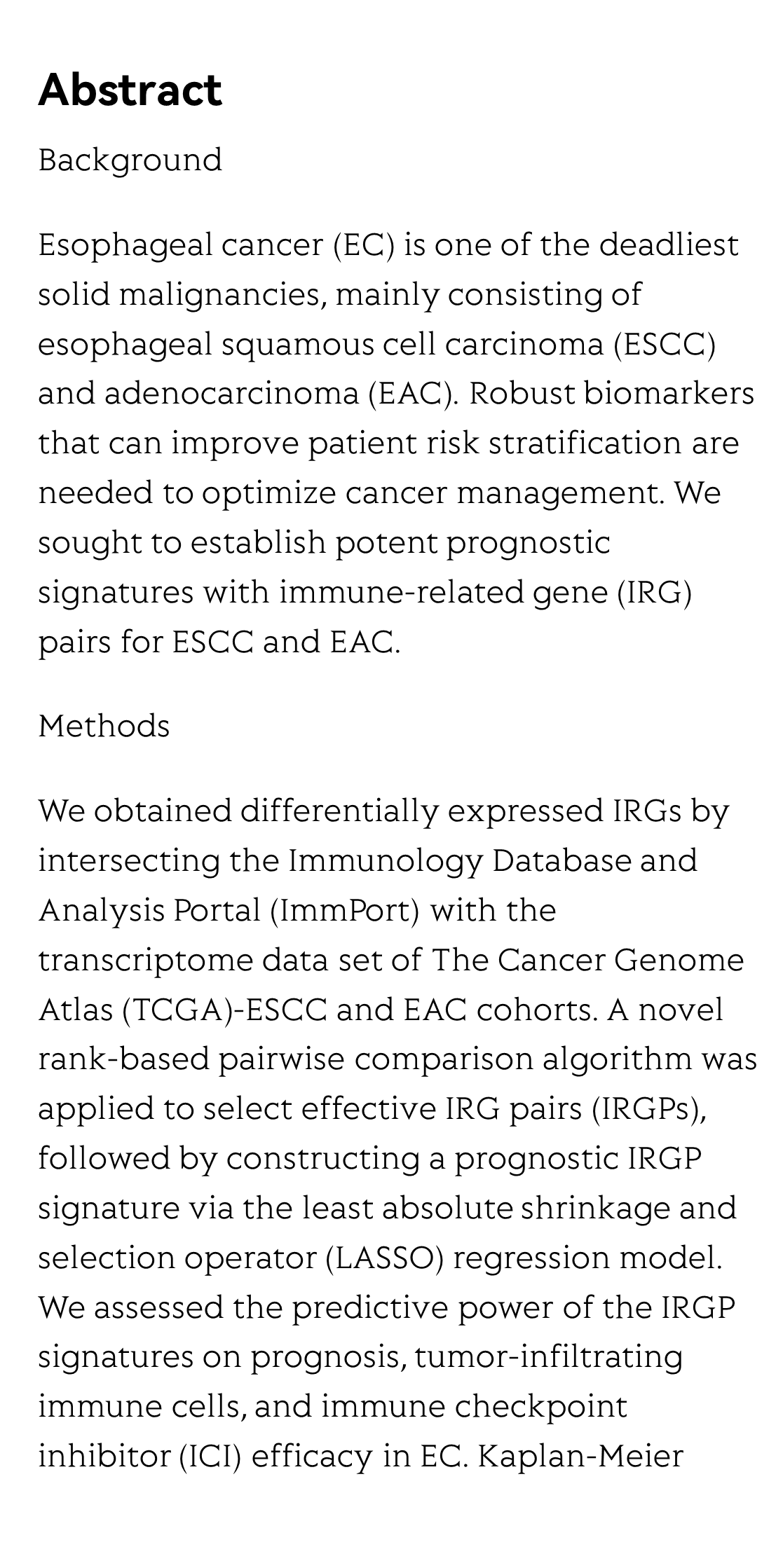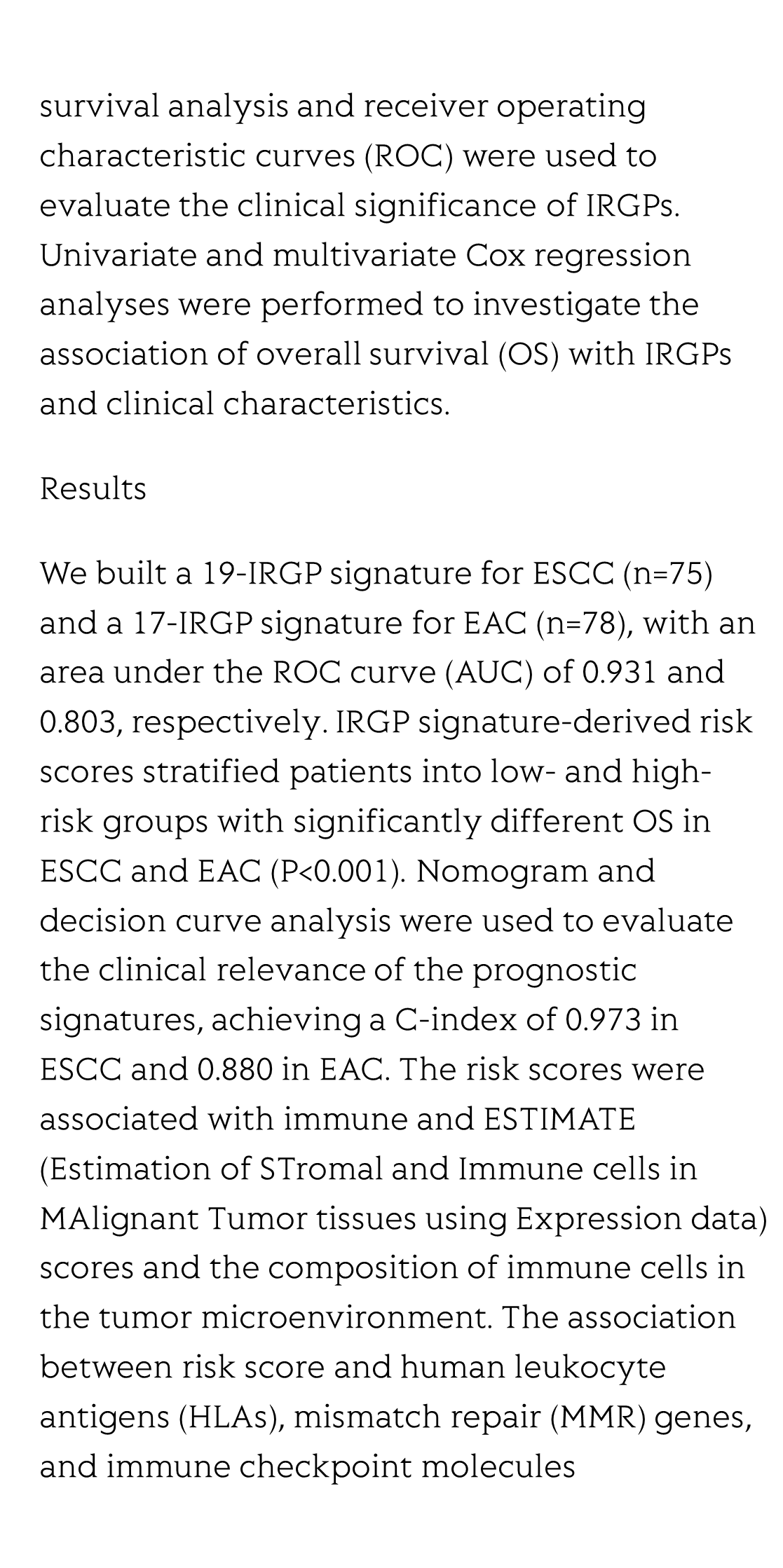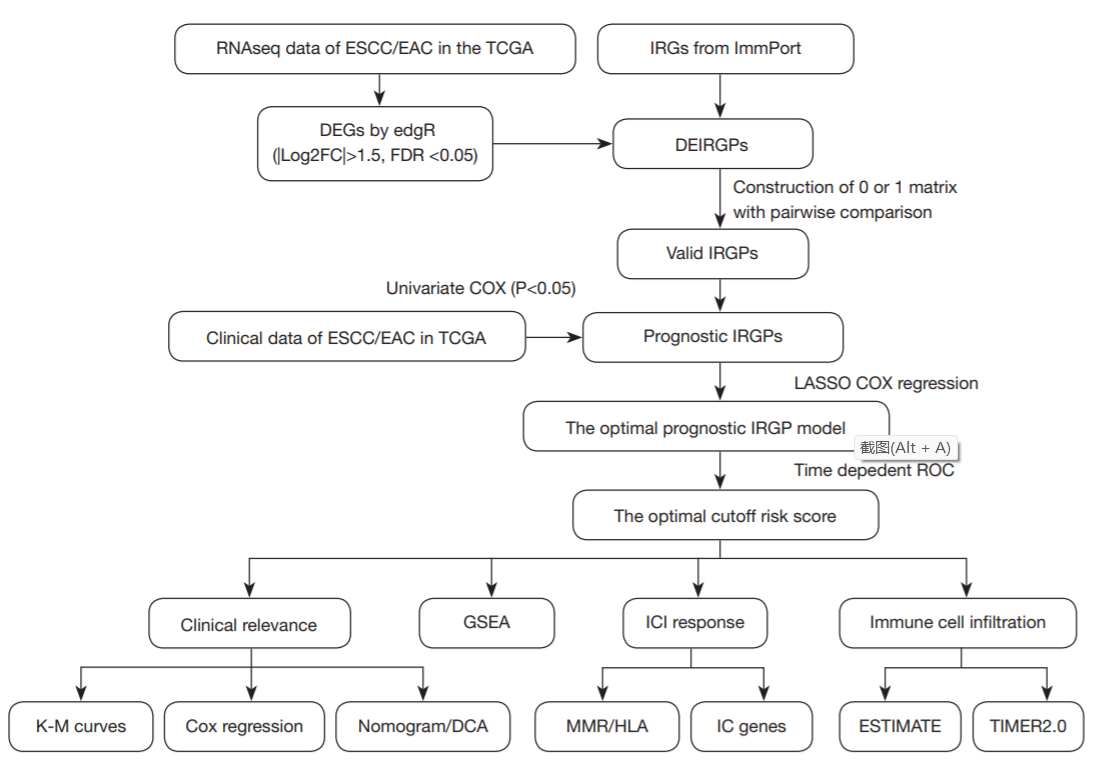(Peer-Reviewed) Development of immune gene pair-based signature predictive of prognosis and immunotherapy in esophageal cancer
Kui Cao ¹ ², Tianjiao Ma ³, Xiaodong Ling 凌晓东 ⁴, Mingdong Liu ², Xiangyu Jiang ⁴, Keru Ma ⁴, Jinhong Zhu 朱锦红 ¹, Jianqun Ma 马建群 ⁴
¹ Department of Clinical Laboratory, Biobank, Harbin Medical University Cancer Hospital, Harbin, China
中国 哈尔滨 哈尔滨医科大学附属肿瘤医院 检验科
² Department of Clinical Oncology, Harbin Medical University Cancer Hospital, Harbin, China
中国 哈尔滨 哈尔滨医科大学附属肿瘤医院 临床肿瘤科
³ Department of Cardiovascular Surgery, Sun Yat-sen Memorial Hospital, Sun Yat-sen University, Guangzhou, China
中国 广州 中山大学孙逸仙纪念医院 心血管外科
⁴ Department of Thoracic Surgery, Harbin Medical University Cancer Hospital, Harbin, China
中国 哈尔滨 哈尔滨医科大学附属肿瘤医院 胸外科
Annals of Translational Medicine, 2021-10-20
Background
Esophageal cancer (EC) is one of the deadliest solid malignancies, mainly consisting of esophageal squamous cell carcinoma (ESCC) and adenocarcinoma (EAC). Robust biomarkers that can improve patient risk stratification are needed to optimize cancer management. We sought to establish potent prognostic signatures with immune-related gene (IRG) pairs for ESCC and EAC.
Methods
We obtained differentially expressed IRGs by intersecting the Immunology Database and Analysis Portal (ImmPort) with the transcriptome data set of The Cancer Genome Atlas (TCGA)-ESCC and EAC cohorts. A novel rank-based pairwise comparison algorithm was applied to select effective IRG pairs (IRGPs), followed by constructing a prognostic IRGP signature via the least absolute shrinkage and selection operator (LASSO) regression model. We assessed the predictive power of the IRGP signatures on prognosis, tumor-infiltrating immune cells, and immune checkpoint inhibitor (ICI) efficacy in EC. Kaplan-Meier survival analysis and receiver operating characteristic curves (ROC) were used to evaluate the clinical significance of IRGPs. Univariate and multivariate Cox regression analyses were performed to investigate the association of overall survival (OS) with IRGPs and clinical characteristics.
Results
We built a 19-IRGP signature for ESCC (n=75) and a 17-IRGP signature for EAC (n=78), with an area under the ROC curve (AUC) of 0.931 and 0.803, respectively. IRGP signature-derived risk scores stratified patients into low- and high-risk groups with significantly different OS in ESCC and EAC (P<0.001). Nomogram and decision curve analysis were used to evaluate the clinical relevance of the prognostic signatures, achieving a C-index of 0.973 in ESCC and 0.880 in EAC. The risk scores were associated with immune and ESTIMATE (Estimation of STromal and Immune cells in MAlignant Tumor tissues using Expression data) scores and the composition of immune cells in the tumor microenvironment. The association between risk score and human leukocyte antigens (HLAs), mismatch repair (MMR) genes, and immune checkpoint molecules demonstrated its predictive value for ICI response. Differential immune characteristics and predictive value of the risk score were observed in EAC.
Conclusions
The established immune signatures showed great promise in predicting prognosis, tumor immunogenicity, and immunotherapy response in ESCC and EAC.
Meta-lens digital image correlation
Zhou Zhao, Xiaoyuan Liu, Yu Ji, Yukun Zhang, Yong Chen, Zhendong Luo, Yuzhou Song, Zihan Geng, Takuo Tanaka, Fei Qi, Shengxian Shi, Mu Ku Chen
Opto-Electronic Advances
2025-07-29
Broadband ultrasound generator over fiber-optic tip for in vivo emotional stress modulation
Jiapu Li, Xinghua Liu, Zhuohua Xiao, Shengjiang Yang, Zhanfei Li, Xin Gui, Meng Shen, He Jiang, Xuelei Fu, Yiming Wang, Song Gong, Tuan Guo, Zhengying Li
Opto-Electronic Science
2025-07-25
Review for wireless communication technology based on digital encoding metasurfaces
Haojie Zhan, Manna Gu, Ying Tian, Huizhen Feng, Mingmin Zhu, Haomiao Zhou, Yongxing Jin, Ying Tang, Chenxia Li, Bo Fang, Zhi Hong, Xufeng Jing, Le Wang
Opto-Electronic Advances
2025-07-17









